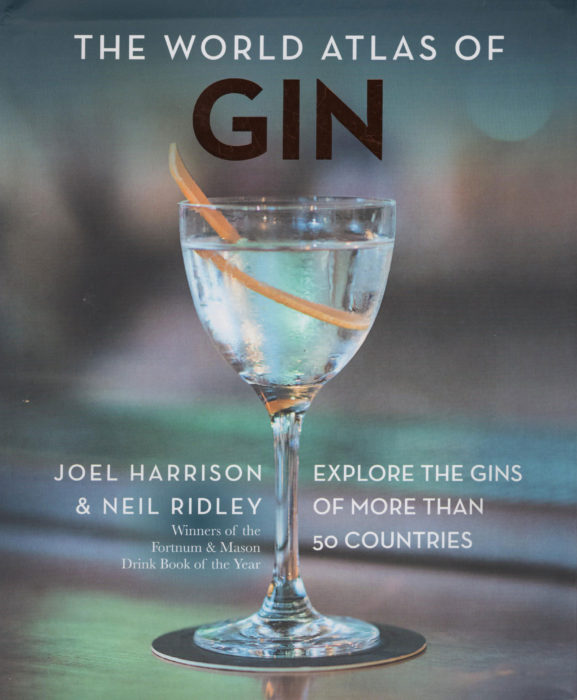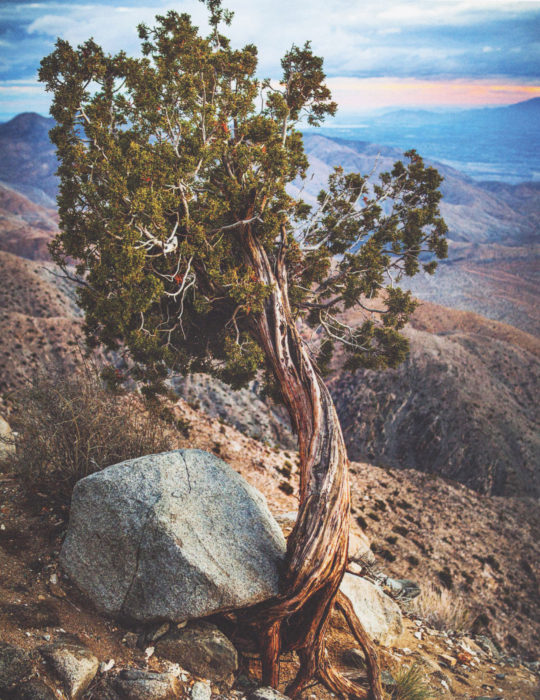

You will often find references to the renaissance of different liquors. We have books about rum, whiskey, and, yes, gin. Alcohol, in all its forms, remains vibrantly interesting to people around the world. This book, The World Atlas of Gin, is an important work for those of us who love gin. Just to be clear, Suzi and I have a pantry with a dozen different gin brands. Very different.
Ah, gin. In the pecking order of booze, gin is often a tad derided. You know the phrases: gin joint, bathtub gin. Gin’s history is, to be truthful, a bit tainted. London is the soul of gin and a couple of hundred years ago gin-based alcoholism was a serious social problem.
In Prohibition in New York City, there were perhaps more than 50,000 stills hidden across the city. Many of them were fashioning gin, perhaps the easiest alcoholic beverage to concoct. Gin always begins with juniper berries and alcohol, but then gin makers can add any of hundreds of additional flavors: cinnamon, cassia bark, lime, lemon, orange, grapefruit, bay, almond, … Add enough of those ingredients and even the worst alcohol can be made palatable. And thus we had bathtub gin.
The World Atlas comes in two parts. The first covers the background you need to fully appreciate the power and the elegance of gin: history, gin styles, how gin is produced, the many types of stills that can be used, the impact of still type on the ultimate taste, the role of juniper, the role of all those botanical components, how to taste gin, and — at the end — a catalog of the most prominent gin cocktails by country.
That’s a juniper tree —or bush — in that second picture. Central and South Europe is the home to the species most used in gin making. But North America, Scandinavia, South Africa, India and China are home to other juniper species that gin makers are also employing. In all there are 67 species of juniper, so the combinations are endless.
In an era of global warming, with its impact on plants, you can imagine the strain on gin makers. How do you maintain uniformity of flavor, year after year, as the annual supply of herb and botanicals and citrus products shifts in quality. Changes in temperature and moisture affect the taste of those components. Each batch of gin therefore requires consummate skill so that your Hedricks G&T tastes the same night after night.
In part two of the book, you get a two-hundred-page tour of the world of gin. Cities, countries, and continents are cataloged for you.
Well, one city: London. Eleven London gins are profiled here, beginning with the quintessential Beefeater. Thames Distillers and Marylebone Gin are the products of eighth-generation distillers, a fact reinforcing the long history of gin in London cultural life. Beyond London, there are sections for the rest of England, Scotland, Wales and Ireland. Yes, besides Irish whiskeys you can find a dozen gin distilleries across the Emerald Isle.
There are long sections for the Scandinavian and Baltic states. Crafter’s Gin has been produced in Estonia since 1898. That firm also makes an Aromatic Flower Gin using extract from wild roses.
That gin renaissance is surely typified by the Americas: North, Central, and South. Fifty pages here cover gins from the United States, Canada, Mexico, Brazil, Peru, Bolivia, Columbia and Argentina. What can you experience here? From Columbia comes, I’m not kidding, Dictator Gin. The base spirit here comes from sugar cane distilled five times and infused with distinctive berries, roots, spices, and citrus. Back in the USA, Cascade Alchemy in Oregon makes its product with the local juniper species, Juniperus occidentalis handpicked in the Badlands area outside of Bend. Gins can be very, very specific. This is terroir at the same level as grapes in Burgundy.
The gin tour extends to the Middle East and Africa, to Australasia, and Asia. The Japanese apply the same skills to their gin making as they do to whiskey and sake. In Thailand, they make Paper Lantern Gin using a base alcohol distilled from rice. In Vietnam, Furbrew Geneva Gin uses waste beer for the base. Back in Thailand, Iron Balls Gin is based on a fermented mixture of coconut and pineapple.
Truly, gin is a worldwide beverage. Adamant craving for gin, coupled with the desire to use local products, has spawned an assembly of products that do boggle your mind. Using coconut and pineapple is something that those 18th Century gin makers in London would have laughed at. Now, we can all laugh in enjoyment.
Gin has become an adventure, a worldwide adventure. The World Atlas of Gin is your perfect tour book.
This book will be released on October 1 but you can preorder now and begin stocking up on gins, lots of gins.
